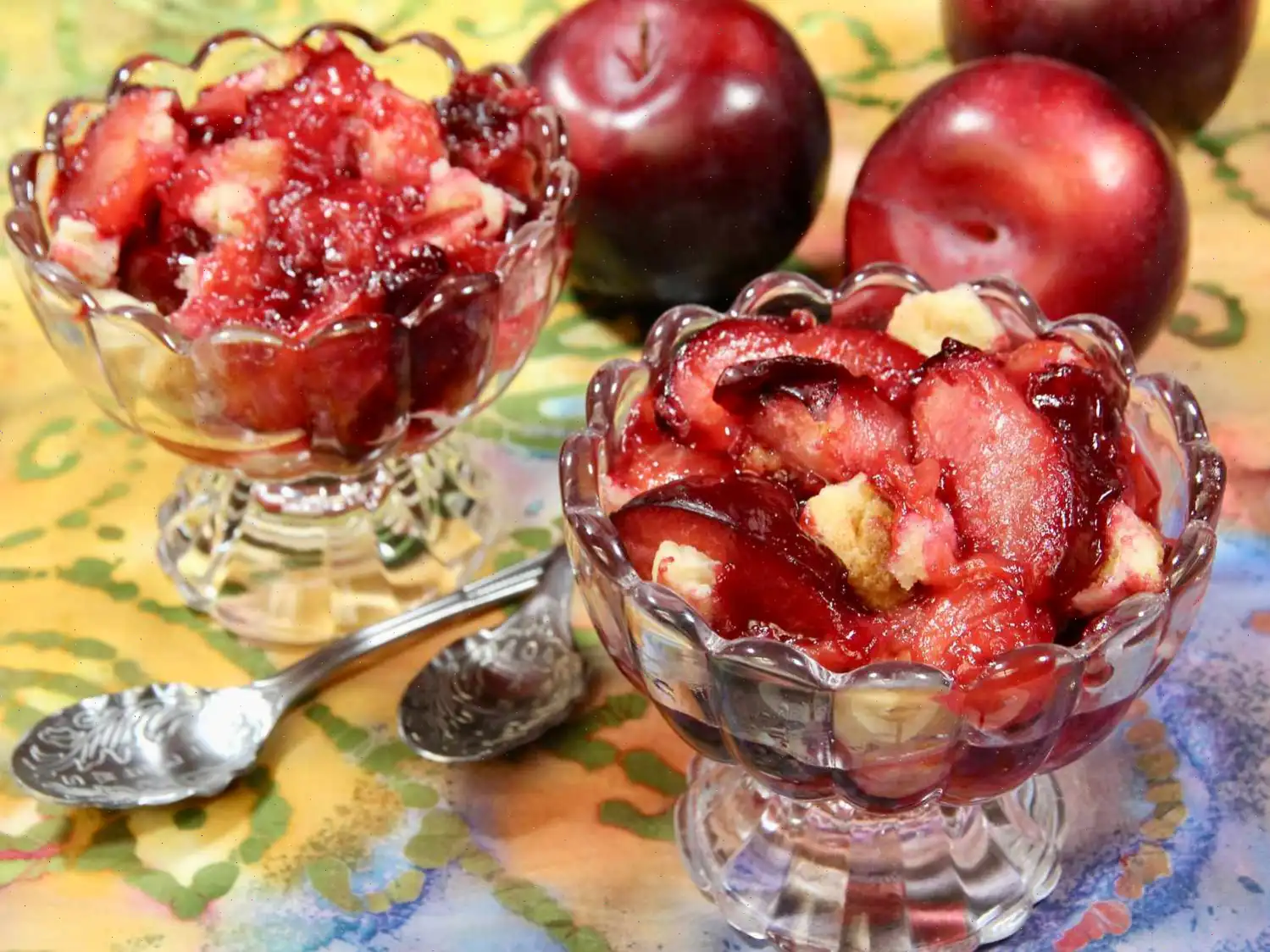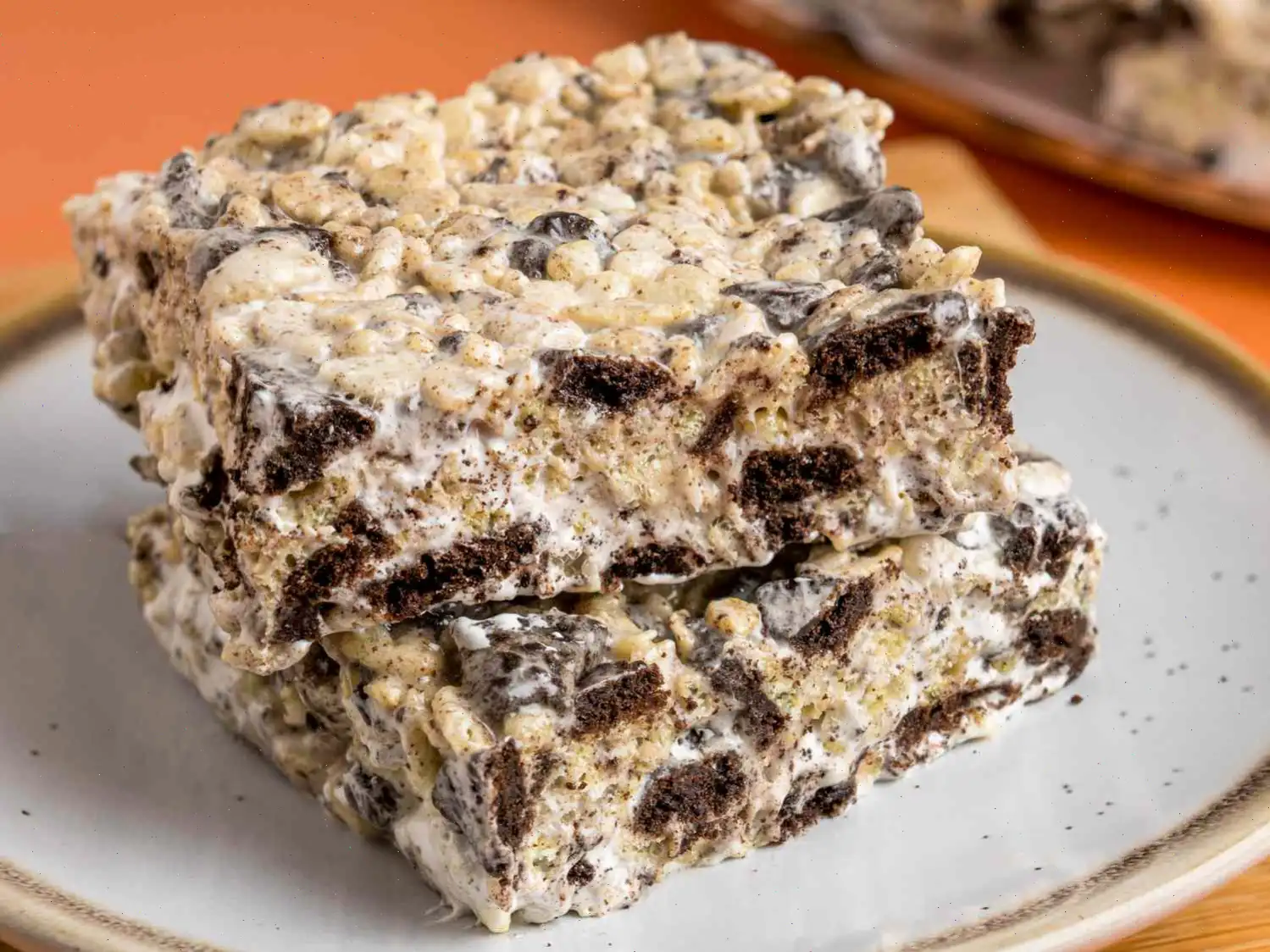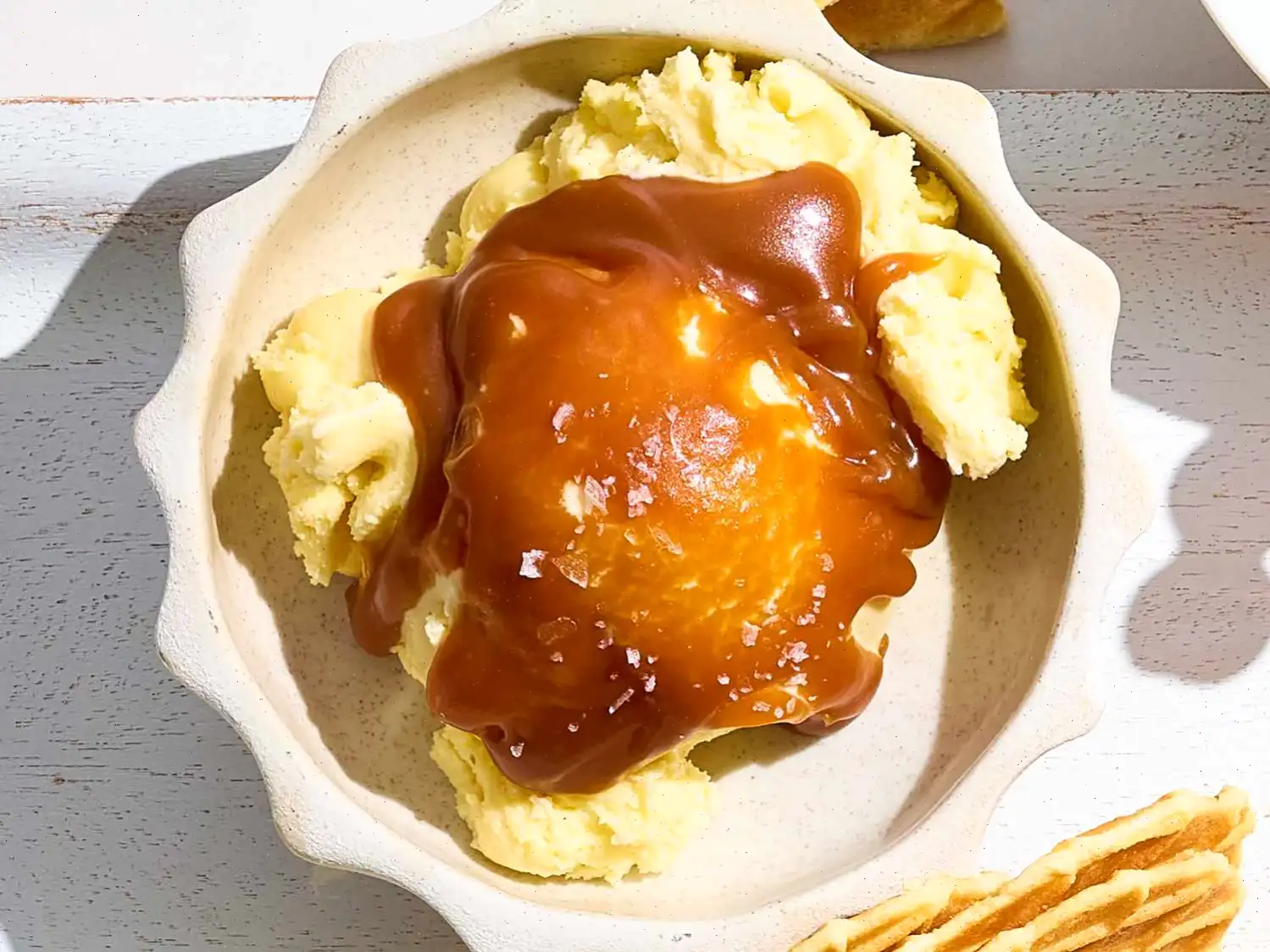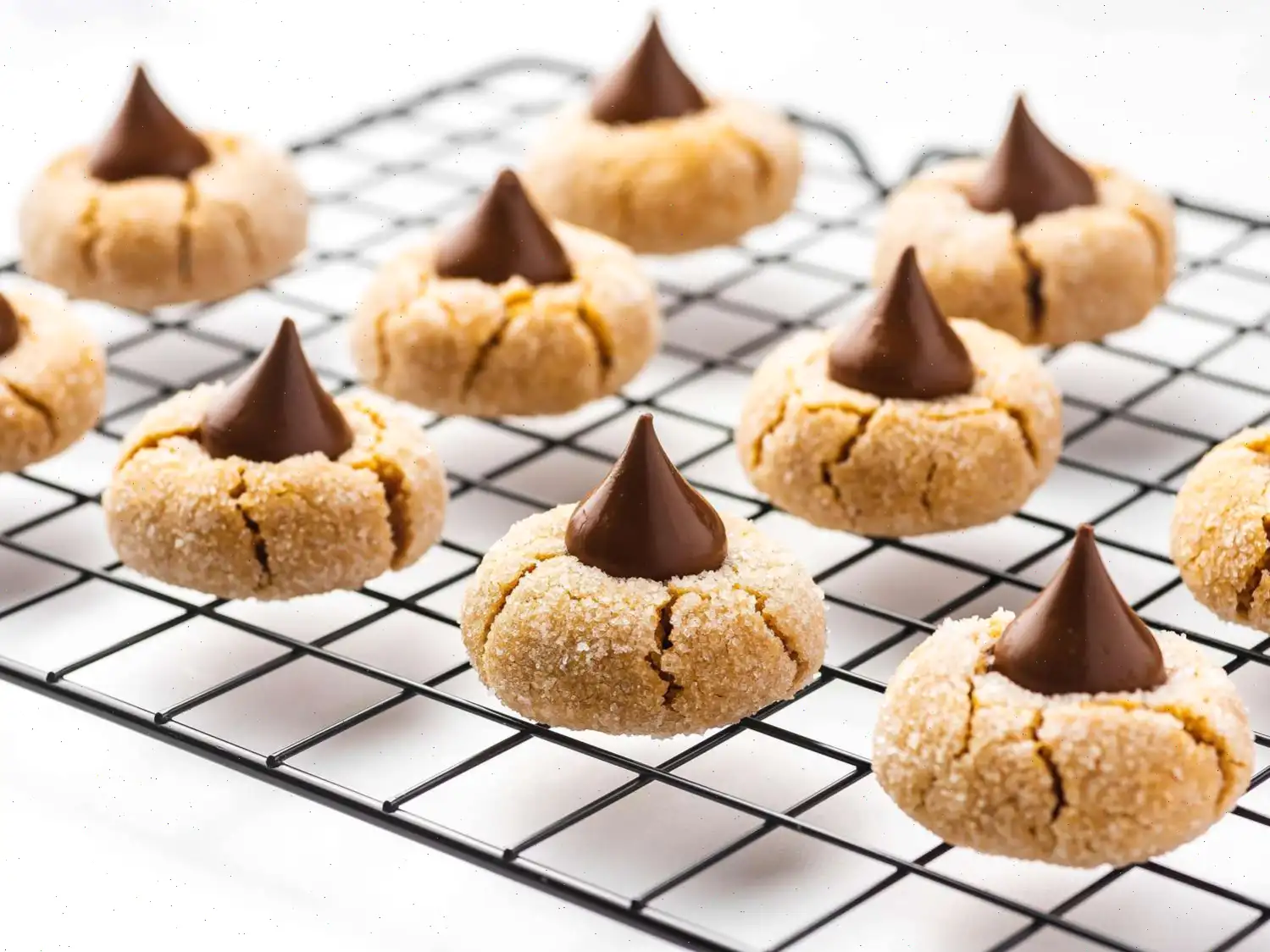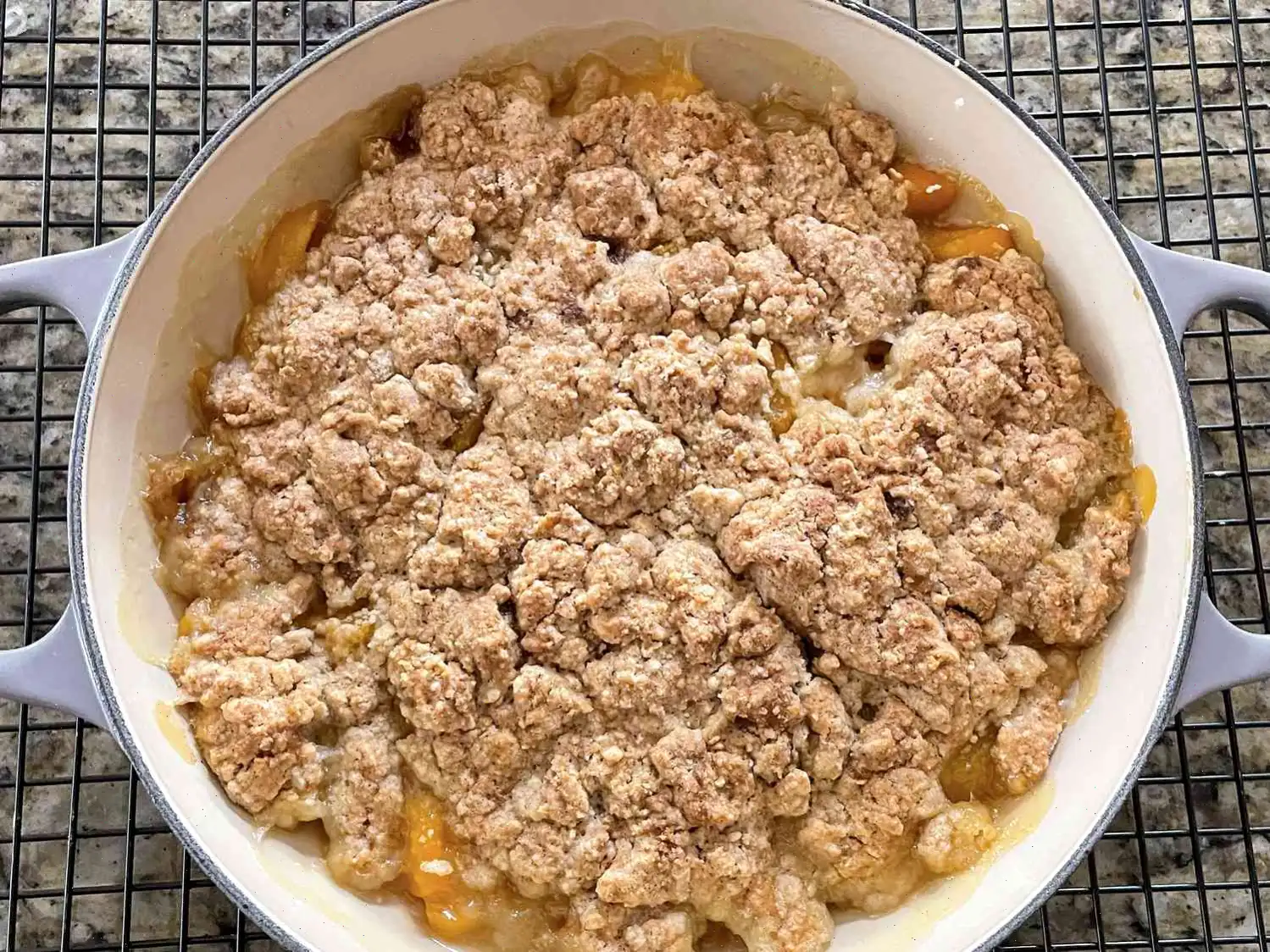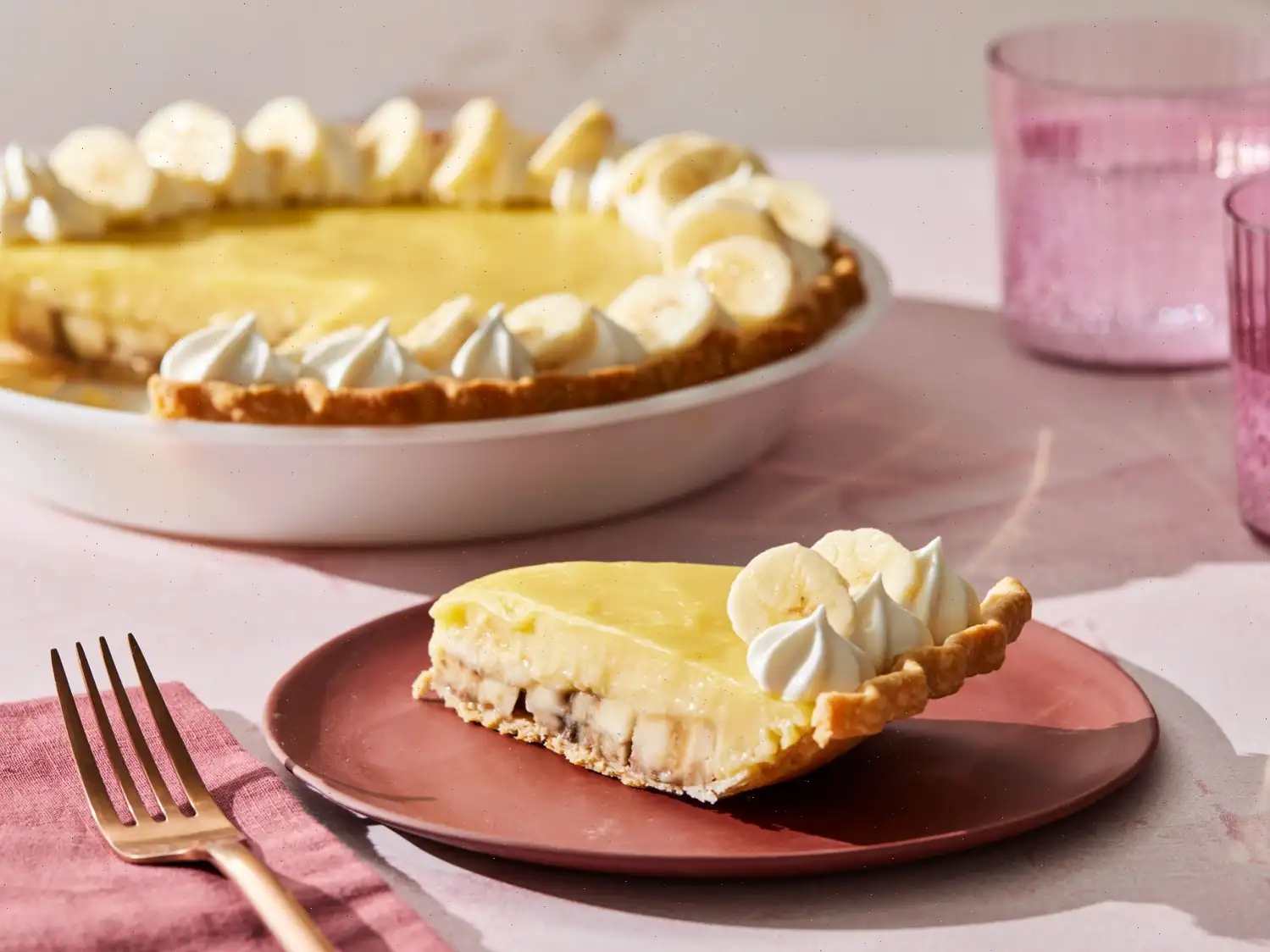
Easy Plum Cobbler Recipe
Ingredients
Fruit Filling:
- 1 pound plums
- 1 teaspoon lemon juice
- 2 tablespoons white sugar
- 1 tablespoon cornstarch
- teaspoon vanilla extract
Topping:
- cup all-purpose flour
- teaspoon baking powder
- 1 pinch salt
- 1 tablespoons butter
- 1 tablespoon boiling water
Directions
- Preheat your oven to 400F (200C) and lightly coat a baking dish with cooking spray.
- Halve and pit the plums, then slice or quarter them, depending on the size. Arrange the fruit in a single layer in the prepared baking dish.
- Drizzle the lemon juice over the fruit, then sprinkle with 2 tablespoons of sugar, cornstarch, and vanilla extract. Toss gently to coat the plums and set aside.
- In a separate bowl, combine the flour, 2 tablespoons of sugar, baking powder, and salt. Mix well.
- Cut the butter into small cubes, then add it to the flour mixture. Using a fork or pastry cutter, work the butter into the flour mixture until it becomes crumbly.
- Stir in the boiling water to form a dough-like consistency.
- Using your fingers or a spoon, drop small dollops of the dough over the plums in the baking dish, covering the fruit evenly.
- Bake in the preheated oven for 25 to 30 minutes, or until a toothpick inserted into the topping comes out clean and the top is lightly golden brown.
Nutrition Facts (per serving)
Calories: 328
Total Fat: 7g (8% DV)
Saturated Fat: 4g (19% DV)
Cholesterol: 15mg (5% DV)
Sodium: 175mg (8% DV)
Total Carbohydrate: 67g (24% DV)
Dietary Fiber: 4g (13% DV)
Total Sugars: 48g
Protein: 3g (7% DV)
Vitamin C: 22mg (24% DV)
Calcium: 52mg (4% DV)
Iron: 1mg (7% DV)
Potassium: 380mg (8% DV)
* Percent Daily Values are based on a 2,000 calorie diet. Your daily values may be higher or lower depending on your calorie needs.
The Story and Culture Behind Plum Cobbler
Plum cobbler, like many fruit cobblers, has its roots in early American colonial cooking. Settlers adapted English and European fruit desserts to local ingredients, using seasonal fruits and simple pantry staples. Cobblers became a practical solution for baking fresh fruit with a minimal topping, often using biscuits or dumplings rather than elaborate pastry crusts. Over time, plum cobbler emerged as a late summer favorite, particularly when plums reached peak ripeness and juiciness.
Regional Characteristics
While cobblers are widely popular across the United States, regional variations influence the fruit choice and preparation. In the South, plums are often paired with sweet biscuits or cornmeal-based toppings, creating a contrast of textures. Northern regions may add warming spices like cinnamon or nutmeg. Some Midwestern recipes incorporate slightly tart or wild plums, allowing the natural sweetness of the dough to balance the flavor. The topping can range from soft and cake-like to crisp and crumbly, depending on local preference.
Differences from Similar Desserts
Plum cobbler is distinct from pies and crisps. Unlike a pie, it does not require a bottom crust, relying instead on a biscuit or dumpling-style topping placed directly over the fruit. Compared to crisps, which use a streusel of oats, sugar, and butter, a cobblers topping is more dough-based and bakes into a golden, fluffy layer. This structure allows the fruit juices to bubble through the topping, creating a tender, moist texture that sets it apart from other fruit desserts.
Where Its Typically Served
Plum cobbler is a staple dessert at family gatherings, summer picnics, and holiday dinners. It is often served warm, either straight from the oven or slightly cooled, sometimes accompanied by a scoop of vanilla ice cream or a dollop of whipped cream. Restaurants specializing in Southern or American comfort food frequently feature cobblers on their dessert menus, celebrating seasonal fruits in an approachable, homestyle format.
Interesting Facts
- Plum cobblers name originates from the toppings resemblance to cobblestones, unevenly scattered over the fruit.
- Historically, cobblers were considered a practical dessert for pioneers, as they required fewer ingredients than pies and could be baked in cast-iron skillets over an open fire.
- Different plum varieties can dramatically alter the flavor and sweetness, making it a versatile dish for experimenting with tart, sweet, or even slightly savory notes.
- In some Southern traditions, leftover cobbler is repurposed into breakfast dishes, baked with cream or served over pancakes for a sweet twist.
- The simplicity of plum cobbler has inspired countless adaptations worldwide, including using other fruits like peaches, cherries, and berries while maintaining the classic cobbler structure.
FAQ about Easy Plum Cobbler Recipe
Comments
William Lee
12/13/2022 07:51:43 AM
An excellent way to make the most of ripe plums. The result was juicy and delicious!


